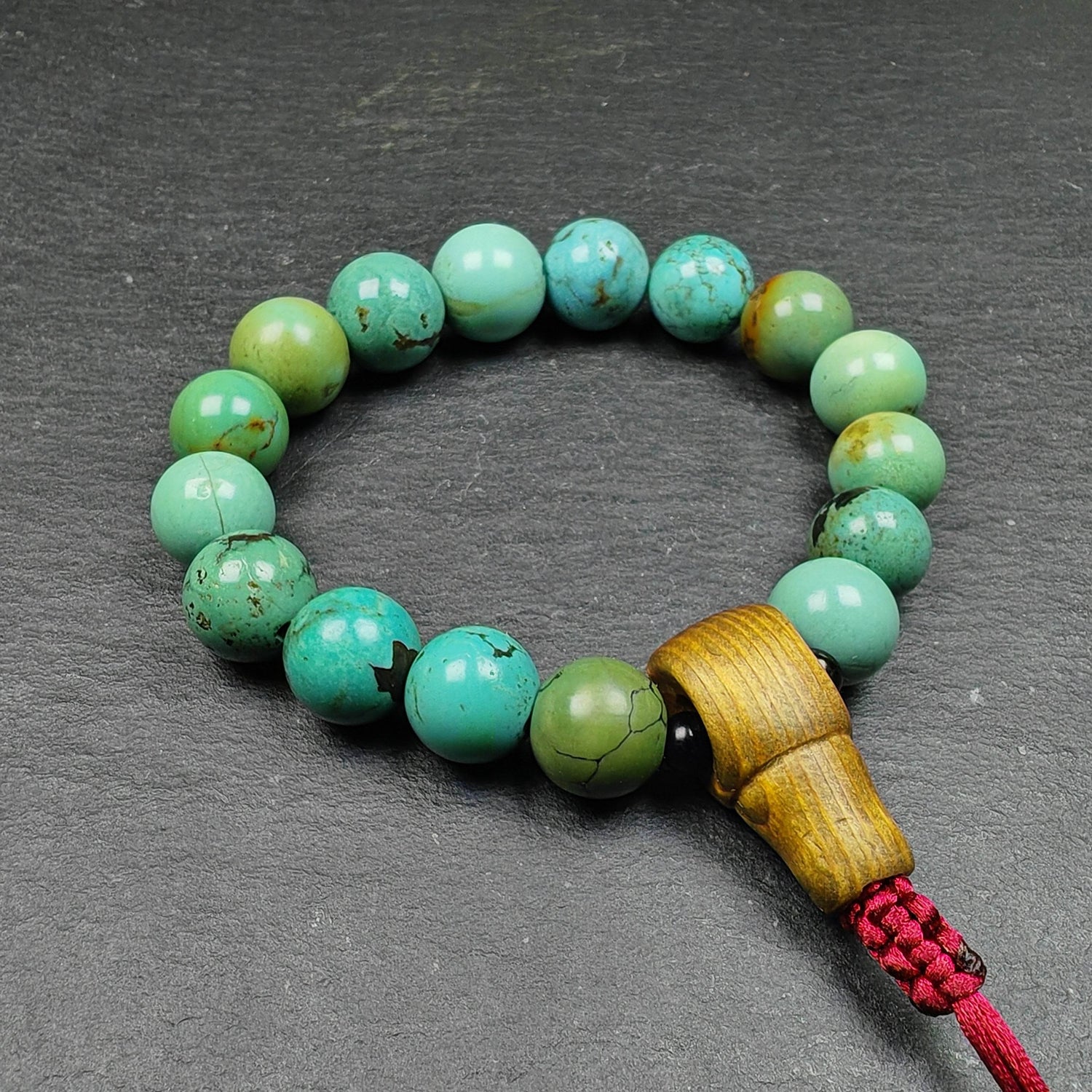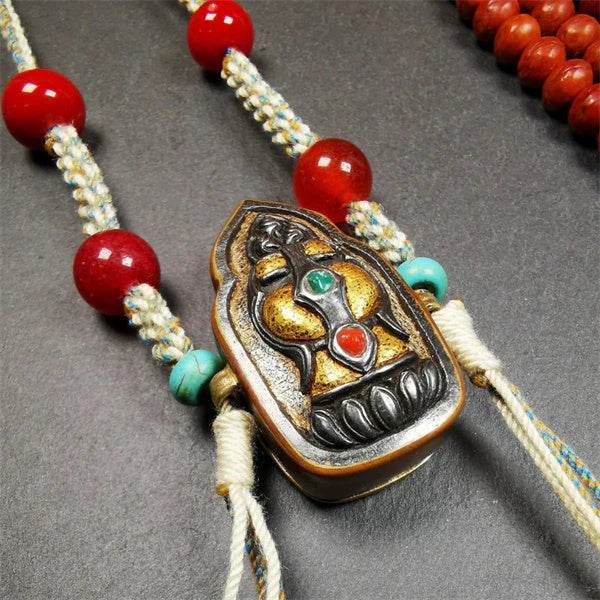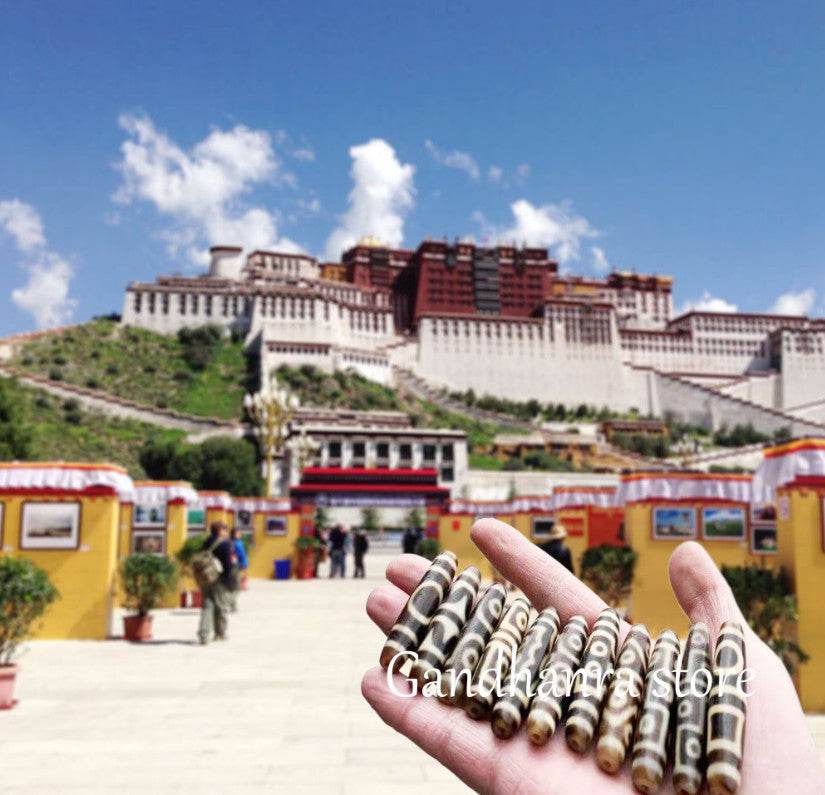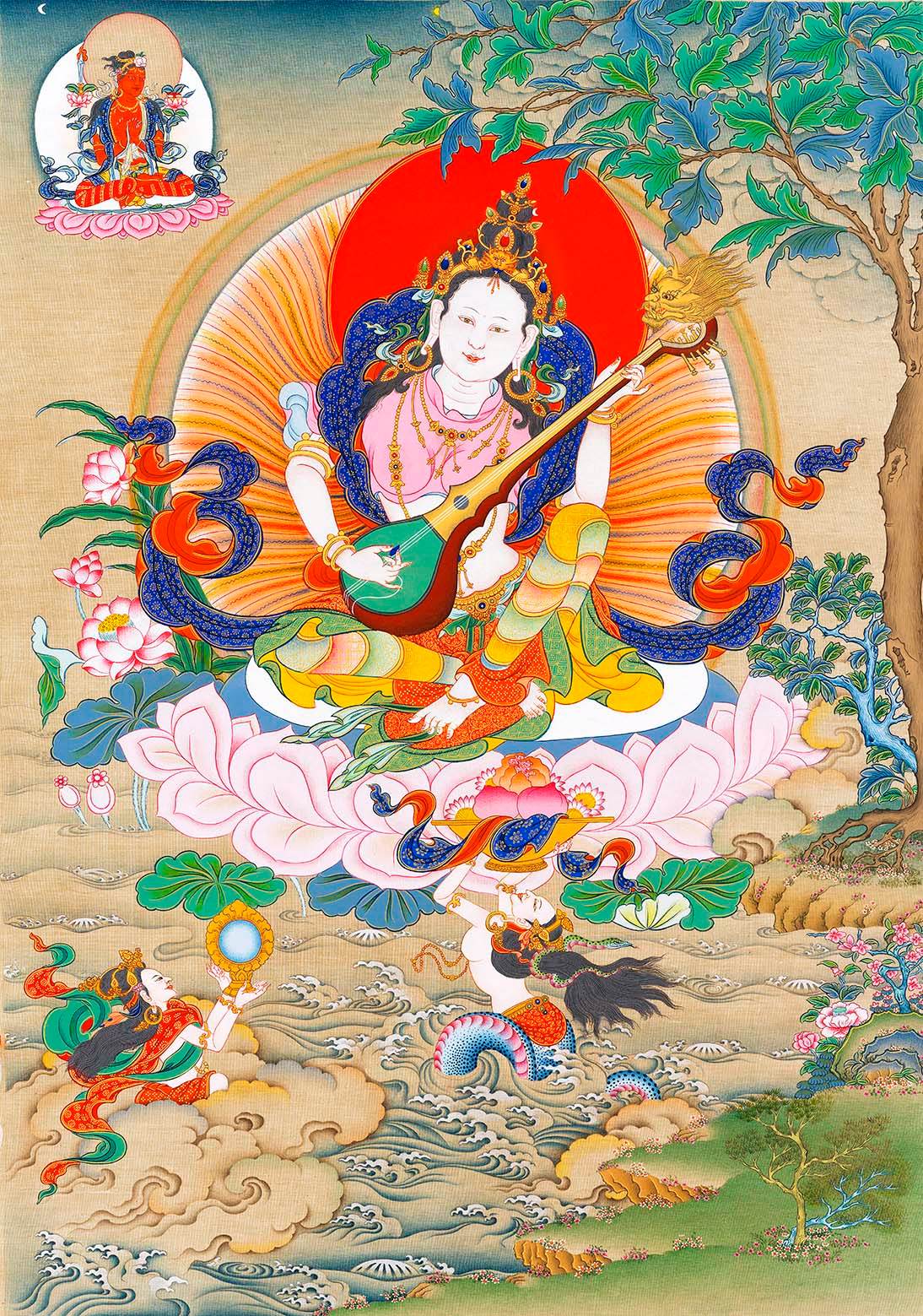
Jambhala in Intangible Cultural Heritage Dance Arts

Vaisravana, 19th Century
Private Collection

The Cham Dance Performance Troupe
The Offering Rituals to the Wealth Deity in Tibet
The welcoming of Jambhala on the fifth day of the first lunar month is a significant folk activity during the Spring Festival in Han Chinese regions, where the Jambhala typically refers to the "Five Roads to Wealth" deities in the Han belief system. In previous articles, we have also introduced two Tibetan deities of wealth: Vaisravana and Palden Lhamo. Regarding Vaisravana, an annual grand ceremony known as the "Namse Chopa" (རྣམ་སྲས་མཆོད་པ, offering to Vaisravana) takes place at the famous ancient Shalu Monastery in the Tsang region from the 13th to the 15th day of the 12th month in the Tibetan calendar. This ceremony, with a history of nearly 700 years, was established by the great Tibetan scholar Butön Rinchen Drub (བུ་སྟོན་རིན་ཆེན་གྲུབ) and is a Cham dance (འཆམ) ritual primarily dedicated to Vaisravana.
Namse Chopa
It is understood that in the year 1353, the 64-year-old master Butön, with the assistance of his eminent disciple Rinchen Namgyal (ལོ་ཙྭ་བ་རིན་ཆེན་རྣམ་རྒྱལ), established the Namse Chopa ceremony. Each year, the preparation for this event begins on the 10th day of the 12th Tibetan lunar month and spans a total of 8 days until its completion. The 4th and 5th days are designated for the official public performances. At the break of dawn, when the first rays of sunlight rise over the eastern mountains, the monks performing the Cham dance commence the initial rituals in front of the thangka depicting the dual-aspect Vaisravana within the slate courtyard of Shalu Monastery. Following this, they return to the Dukhang assembly hall to make their vows and only then, upon the command of the Umdze (དབུ་མཛད), the master of ceremonies, does the performance officially begin. The performance involves a troupe of over 50 monks.

Cham Dance performer
Not only that, but the event also features an impressive variety of Cham dances, with as many as 15 different types, along with elements such as tigers, lions, garudas, deer, and monkeys. Compared to other dances, the steps are more solemn and majestic, with some parts being interactive, thus showcasing a great deal of entertainment. Moreover, during the Cham dance performance, there is a sequential use of costumes and props of upper, middle, and lower grades, as well as musical instruments like long horns, flutes, conch shells, thighbone trumpets, cymbals, and ritual staffs, among others.

Cham Dance Performer
Photography by David Ducoin
Vaisravana
As mentioned at the beginning, the Namse Chopa at Shalu Monastery, centered around Vaisravana, is a rare form of Cham dance. Vaisravana, often referred to as "Vaiśravaṇa" in classical texts, holds a high status within the Buddhist discourse as a dharma protector personally appointed by Shakyamuni Buddha. He is depicted in many forms, with the most common being a yellow-faced, two-armed figure, holding a victory banner in his right hand and a jewel-spitting mongoose in his left, while riding a lion.

Vaisravana, 19th Century
Private Collection
Throughout history, Vaiśravaṇa (also known as Kubera or the Heavenly King of Abundant Blessings) has been revered as a symbol of wealth, not only in Tibet but also across South Asia and Central China. However, in reality, Vaiśravaṇa is equally a symbol of power. Scholars, based on related documents, statues, and murals unearthed in Dunhuang, have discovered that historically, Vaiśravaṇa was more often associated with the people's hopes for national protection and the well-being of the populace. Therefore, the Langsai Quba in Shalu Monastery not only symbolizes good weather, bountiful harvests, and abundant grains, but also represents the aspiration for political harmony, national prosperity, and the peace and security of the people. As mentioned in our article last year, from a Buddhist perspective, seeking wealth is inherently a means of benefiting others, rather than an end in itself.

The Dancers in the Murals of Shalu Monastery
Cham Dance
As a specific term, the Tibetan word "Cham" refers exclusively to a unique religious dance. Although the themes of different Cham performances may vary, their general forms of presentation are quite similar. Performers don various specific masks and costumes, accompanied by corresponding musical instruments, and engage in dancing, rituals, and interactive segments. The emergence of Cham dance in Tibet has an exceedingly long history. The renowned Tibetologist, Dungkar Lobsang Thrinle, based on terms such as "Shenrab Nine Cham" (གཤེན་རབ་དགུ་འཆམ) found in Tibetan Bon religious texts, asserts that this folk religious ritual existed in the local Tibetan region long before the Tibetan Empire. The mainstream adoption of this ritual is closely related to another significant event in Tibetan cultural history—the establishment of Samye Monastery.

Cham Dance at Drikung Thil Monastery, 2021
In the year 775 AD, Samye Monastery, the first monastic institution in Tibetan history, was completed. According to texts such as *The Testament of Padma* (*པདྨ་བཀའ་ཐང*) and *The Five Testaments* (*བཀའ་ཐང་སྡེ་ལྔ*), under the guidance of Padmasambhava and Śāntarakṣita, a Vajra dance was performed during the celebration ceremony of its completion, as well as during the groundbreaking ceremony held earlier in 736. This is regarded by later scholars as the first appearance of Cham dance in Tibet. However, Dungkar Lobsang Thrinle argues that the Cham dance performed at that time still belonged to the aforementioned Bon tradition rather than the Cham dance within the later Buddhist framework, as the two differ significantly in their content and systems. Regardless, the Cham dance of Samye Monastery has been passed down to this day and remains one of the most renowned among the various Cham traditions in Tibet.

Murals of Cham Dance at Samye Monastery
The Forms of Cham Dance
Unlike ordinary folk dances, the Cham dance within the Buddhist perspective shares an intrinsic continuity with the early yogic traditions of Hinduism and the dance forms of Shiva. Moreover, its characters and themes are closely related to Tantric scriptures. For instance, the Cham dance at Samye Monastery unfolds based on the layout of the Five Dhyani Buddhas, and the performers' masks correspond to concepts such as pacifying, increasing, magnetizing, and destroying, distinguished by their colors. For the performers, there are three fundamental requirements known as "dance, drawing, and chanting" (གར་ཐིག་དབྱངས་གསུམ), which include dancing, drawing, and reciting. The types of Cham dance that each monastery can host vary depending on their resources. For example, Palyul Monastery holds the peaceful and wrathful (ཞི་ཁྲོ) Cham rituals twice a year, with the number of performers reaching up to a hundred at its peak.

Cham Dance Troupe During Tibetan New Year
In modern times, Cham dance, a unique Tibetan art form, has evolved to carry meanings far beyond its original purpose. It not only embodies deeper implications of classical aesthetics and philosophy but also plays a significant role in local economic development by attracting surrounding communities. As a result, it has long been listed as both a world-class and national-level intangible cultural heritage.

Cham Dance in the Murals of the Potala Palace







1 komentář
Muchas gracias. ?Como puedo iniciar sesion?